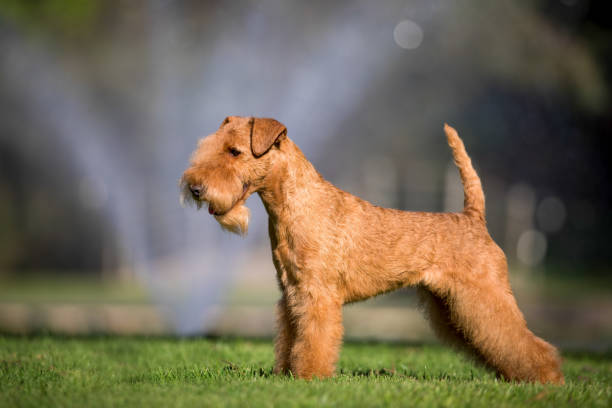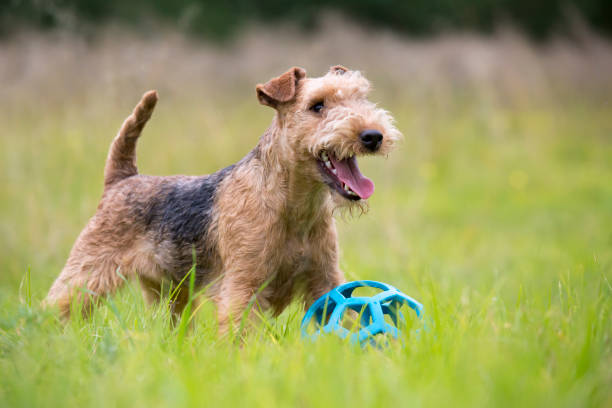Lakeland Terrier

Breed History:
The Lakeland Terrier hails from the Lake District in northern England and was originally developed in the 19th century to hunt and protect livestock from foxes. Bred from a mix of working terriers—including the now-extinct Old English Black and Tan Terrier and the Border Terrier—this breed was prized for its courage, endurance, and ability to work in rugged terrain.
The breed was officially recognised by the Kennel Club (UK) in 1928 and later by the American Kennel Club in 1934. Though less common today, the Lakeland Terrier is still admired for its spirited nature and classic terrier look.
Height: 33-38 cm
Weight: 7-8 kg
Size – Small
Life Expectancy: 12–15 years

Breed Appearance:
The Lakeland Terrier is a small, sturdy, and squarely built dog with a wiry double coat and distinctive beard and bushy eyebrows. Its head is rectangular with dark, oval eyes and V-shaped ears that fold forward.
The breed comes in several colours, including black, liver, red, wheaten, blue, grizzle, and tan. Its coat is dense and harsh on top with a soft undercoat—traditionally hand-stripped to maintain texture and shape.
Breed Type – Companion/Hunting:
Bred to be both a farm dog and a fearless fox hunter, the Lakeland Terrier retains its working roots. It is spirited, intelligent, and bold, but also affectionate and loyal to its family.
This breed is highly alert and often acts as a watchdog, barking at anything unfamiliar. Lakelands typically get along well with children and can coexist with other dogs, but early socialisation is important to reduce terrier-like stubbornness and prey drive.

Training:
Lakelands are intelligent and quick learners, though they can be headstrong. Training should start early and focus on consistency, patience, and positive reinforcement.
They enjoy having a job to do, whether it's learning tricks, participating in agility, or engaging in scent games. Without mental stimulation, they can become bored and mischievous.
Health & Care:
The Lakeland Terrier is generally a healthy breed, but may be prone to:
-
Legg-Calvé-Perthes disease
-
Lens luxation
-
Hypothyroidism
-
Skin allergies
Regular veterinary care, genetic screening from reputable breeders, and a balanced diet support long-term health.

Living Conditions:
This breed adapts well to both apartment living and larger homes, provided it gets enough exercise. Lakelands do best in active households and enjoy being part of family activities.
A secure yard is ideal, as they may dig or chase small animals due to their strong prey drive. They are not well-suited to being left alone for long hours.
Exercise:
Lakeland Terriers are energetic and need daily activity to stay mentally and physically balanced. Aim for 45–60 minutes of walking, play, and off-leash running in a safe area.
They also benefit from mentally stimulating games, agility training, or fetch sessions. Without proper exercise, they can become vocal and destructive.
Grooming:
-
Weekly brushing helps control loose hair and maintain coat health
-
Hand-stripping is preferred for show dogs, but clipped coats are fine for pets
-
Regular ear cleaning, nail trimming, and dental care are important
They are a low-shedding breed if properly groomed.

Advantages:
-
Alert, confident, and intelligent
-
Good with children and families
-
Compact size and adaptable to living spaces
-
Minimal shedding with proper grooming
-
Lively and fun personality
Disadvantages:
-
Can be stubborn or overly independent
-
High prey drive; may not get along with small pets
-
Needs regular grooming and coat maintenance
-
Prone to barking and digging
-
May be difficult to off-leash train due to strong instincts

